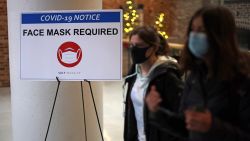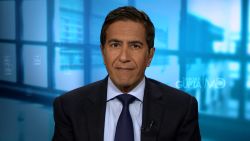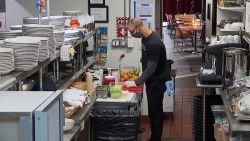As the coronavirus pandemic crushes the global economy, JPMorgan set aside a stunning $6.8 billion worth of reserves to insulate itself from loan defaults.
That helped send JPMorgan’s profit plummeting 69% in the first quarter. America’s largest bank by assets said its net income fell to $2.9 billion in the first three months of the year, compared to $9.2 billion in the same period last year.
Net revenue dipped slightly to $29.1 billion from $29.9 billion year-over-year.
JPMorgan (JPM) CEO Jamie Dimon described the first quarter as an unprecedented challenge in the earnings release. However, Dimon noted that absent the loan reserve, the bank had a fairly decent first quarter, and it remains in a strong financial position.
“The company entered this crisis in a position of strength, and we remain well capitalized and highly liquid,” said Dimon. The bank has $1 trillion of liquidity resources, he added.
The bank extended millions of dollars of new credit in the first quarter and witnessed a record use of revolving credit facilities. Companies drew on their credit lines at “probably twice the rate than in the financial crisis [of 2008],” Dimon said on the earnings conference call.
“I think companies are very rationally getting their liquidity in order ahead of what could be a significant downturn,” he added.
JPMorgan’s economists’ now predict US unemployment will soar to 20% in the second quarter before recovering in the back half of the year, with annualized GDP contracting by 40%.
Dimon said he expects the economy to open up in a staggered way following the crisis.
“In some ways, the sooner the better, but it has to be safe for everybody,” he said.
On a more personal note, Dimon, who had emergency heart surgery in early March, said he feels “great” and that his health doesn’t change his outlook for how long he will remain at the helm.
JPMorgan’s stock was up 1.4% in premarket trading.
Wells Fargo is also bracing for trouble
In other banking news, Wells Fargo (WFC) also reported first-quarter earnings – and the bank is bracing for financial trouble.
The bank announced Tuesday a deeper-than-expected 89% plunge in first-quarter profit, driven largely by a $3.1 billion reserve build to protect against bad loans.
The reserve build “reflected the expected impact these unprecedented times could have on our customers,” Wells Fargo CFO John Shrewsberry said in a statement.
Wells Fargo’s provision for credit losses spiked to nearly $4 billion, compared with $845 million the year before. The bank cited “forecasted credit deterioration due to the COVID-19 pandemic.”
Revenue dropped 18% to $17.7 billion, also missing estimates.
Wells Fargo reported a 5% jump in period-end loans to $1 trillion. That growth could accelerate this quarter because the Federal Reserve recently removed penalties on Wells Fargo to free the troubled bank to lend to small businesses.
Deposits also climbed 4% to $1.4 trillion.
Wells Fargo’s results were also hurt by a $950 million impairment of securities “driven by economic and market conditions.” That writedown largely relates to venture capital and private equity partnerships.
The bank’s shares were up 1% in premarket trading.

























